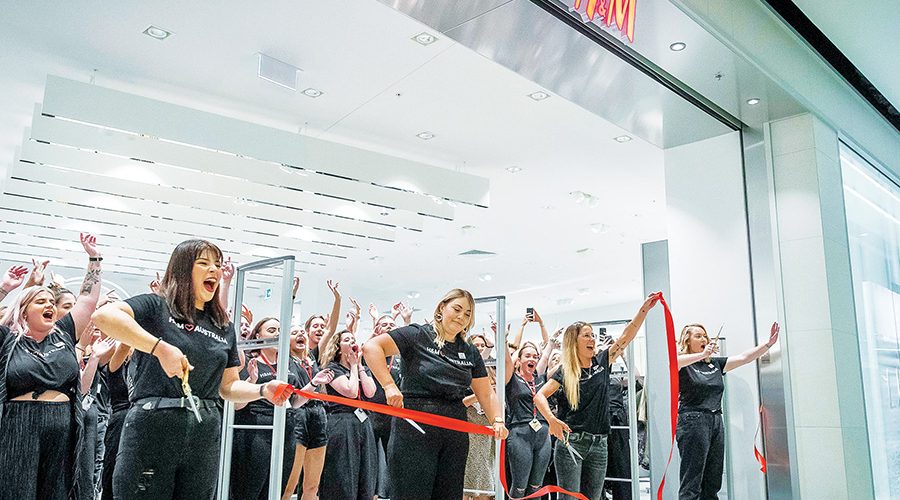David McNamara is responsible for Lendlease’s APPF Retail portfolio, including implementation of the Fund Strategy and portfolio business plan, recommending investment opportunities and setting the strategic direction for each property within the Fund. David has more than 25 years of experience working in the retail sector. He has held senior roles in funds management, asset management, property management, leasing, development and capital transactions in both Australia and the US. David was appointed to his current role in October 2012, after having worked at Lendlease from 1991 to 2005 in a variety of roles and re-joining the company in 2011 as Divisional Asset Manager. Before joining Lendlease, David worked for the GPT Group, where he held the roles of General Manager, Retail Transactions and Head of Retail Asset Management – US.
APPF Retail’s fund strategy is to invest in high-quality shopping centres that dominate their trade areas. We look to invest into assets that are located in areas with high population growth and above average disposable income levels. Our centres have the ability to expand to meet trade area demands and adapt to a changing retail landscape. The fund is typically invested in major-regional and super-regional retail assets that have proven to outperform over the long term.
The latest successful purchase was the acquisition of a further 25% of Harbour Town Gold Coast. This took APPF Retail’s ownership position to 50% of the asset. Harbour Town is the largest outlet mall in Australia and continues to perform strongly following the recent successful redevelopment of the Harbour Town Eats restaurant precinct. The asset benefits from growth in both local trade and tourism on the Gold Coast. The Outlet sector has remained relatively resilient to online disruption as consumers look for a different experience to traditional retail and demand key brands at lower prices.
Changes in the industry over the years
Retail is always changing, with the past 20 years seeing significant changes in the retail mix and design of centres. This has been driven by demographic shifts and shifts in consumer spending. Large fashion-led developments have been supplemented by restaurant and entertainment-based leisure and dining precincts as retail centres look to keep consumers in the assets for longer and compete for consumers’ leisure time. We have also seen a shift in the role of traditional anchors driven by a changing landscape in the department store and mini major sectors. Owners have responded by focusing on ‘place-making’ and innovation in order to attract new customers. Sustainability considerations are also increasingly important and are influencing design and long-term investment considerations.
Retail continues to evolve due to demographic shifts and a changing customer. The growth in entertainment, wellness, restaurant and leisure usages has been in response to changes in consumer behaviour.
Similarly, the introduction of newer mini-major formats has lessened the role of the traditional anchor. This consumer evolution will continue and tomorrow’s centres will need to continue to adapt and evolve to maintain performance.
Changes in retail mix are essential for centres to remain relevant to their consumers. Centres that are unable to adapt their mix and respond to customer shifts will be more impacted by competition and will underperform.
The traditional asset classes are changing with investors now having more choice as to where they invest. Alternative classes such as health, infrastructure and debt are competing with the traditional property classes of retail, office and industrial.
The greatest challenge in recent times has been how to respond to the structural impacts of online retailing. Owners need to re-invest into their centres to ensure that they provide great experiences for consumers and maintain investment returns.
Managing clients and investors
We manage our clients by understanding their requirements and developing long-term relationships based on trust, transparency and performance. Investors have choices with how and where they allocate their funds, with multiple owners and investment classes competing for capital allocation. Our investors entrust us with their money to grow their investment over the long-term, so it is critical that we continue to perform to their expectations.
Our investors are looking for consistency and good performance relative to our benchmarks and investment hurdles. Investors invest for the long-term and select managers based on capability, track record and good governance.
Adding value
Retail and shopping centres are a good investment because they have provided superior risk-adjusted returns relative to other sectors. Over a 20-year period, Super and Major regional centres have shown lower downside risk against other sectors and retail sub-sectors. Centres with the potential and ability to unlock value through under-utilised land parcels will provide opportunities moving forward.
Developments add value to assets by growing market share or repositioning assets to maintain a competitive point of difference. In the current environment, acceptable development return hurdles are becoming increasingly difficult to meet. Developers who have an ability to unlock alternative value opportunities will be well-positioned at this point in the cycle.
Managers of the property can add value by responding to customer requirements. This may be through a variety of ways such as a simple tenancy remix, a major redevelopment, targeted marketing campaigns to drive customer loyalty, or identifying operating cost effiences and capital projects.
We look for investments that are able to dominate their catchments and grow over time. These types of assets enable us to utilise the strength of our managers and investment teams to unlock value for investors.
Outlook
Retail assets will become more mixed use in nature as owners start to work their land holdings more aggressively to introduce usages such as office, residential and other non-retail next to traditional retail assets. Dominant assets with under-utilised land parcels are well-placed to capitalise on the urbanisation trend moving forward. The role of the traditional anchor tenant will continue to change with mixed use and alternative anchors becoming increasingly important to drive a point of difference for customers
The rest of 2019 looks like it will be similar to the past six months. However, we expect to see reduced interest rates flow through to consumer confidence, which should help drive sales growth across the retail sector.

























